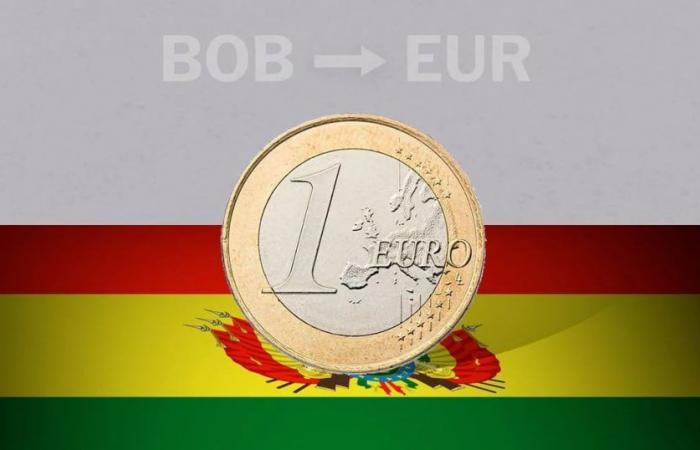He euro was paid at closing to 7.33 bolivianos on averagewhich implied a change of 1.33% with respect to the 7.23 bolivianos of the previous day.
Taking into account the last week, the euro marks a decrease in 0.23%%; although for a year it still maintains an increase in 2.23%.
If we compare the figure with previous dates, it chained four successive sessions in positive digits. The volatility figure presented a visibly higher performance than the volatility reflected in the last year’s data, showing itself as an asset with greater variations than the general trend indicates.
Although the Central Bank of Bolivia has an official price of the dollar, the truth is that on the streets this price is different, something that was evident in early 2023 when a shortage of the US currency was recorded. Currently the official exchange rate is 6.96 for sale and 6.86 for purchase.
Regarding inflation, the Bolivian government expects it to be 3.60% by 2024, a percentage that is close to the ideal of three percentage points. It is worth mentioning that Bolivia has been characterized by registering stable inflation control in recent years, unlike other economies in the region.
The same happens with the growth forecasts for the Gross Domestic Product (GDP), since the Central Bank of Bolivia expects it to be 3.71% in 2024.
He Bolivian is the legal tender of Bolivia since 1987 and is divided into 100 centavos. Previously, the Bolivian peso was used but it was replaced. The Central Bank of Bolivia is the body in charge of regulating the issuance of currency.
Regarding manufacturing, the Bolivian currency stopped its minting and printing during the colonial era due to lack of political interest, which would cause it to finally coins and banknotes were created abroad due to the low cost that this implies. In 2013 they were still manufactured in countries such as the United Kingdom, France and Chile.
Regarding the economy, in 2014 Bolivia resorted to high public spending and increasing domestic credit to maintain its growth, but these decisions resulted in an increase in public debt and a reduction in international reserves.
As in other countries, the coronavirus pandemic severely affected Bolivia’s economy, although inflation was not as high as in other Latin American nations.
In 2022, Bolivia stood out for having a lower inflation rate than its neighboring countries, this partly as a response to fuel price subsidies and the fixed exchange rate of the dollar with respect to the local currency; However, it has had to face a loss of international reserves and increased debt.
The country is also facing global efforts to shift to clean energy, so these conditions will force one of the largest gas exporting countries to look for alternatives this year.






